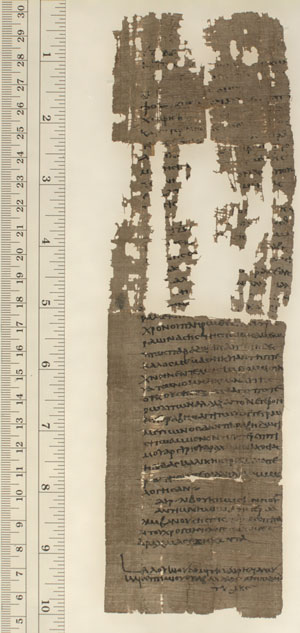
 |
 |
 |
 |
 |
 |
 |
 |
 |
|
Apprentice
Contract |
Texts about Textiles
Karanis was discovered around the turn of the twentieth century, when archaeologists were searching throughout Egypt, but especially in the Fayum region, for ancient texts on papyrus. Papyrus (plural papyri) is a form of paper on which were written letters, inventories, official contracts, prayers, works of literature, etc. Karanis did yield great quantities of papyri (as well as ostraca--singular ostracon--which are pottery shards used as a kind of scrap paper), many of which mention other categories of artifacts found at the site. Texts mentioning textiles allow us to understand more fully the historical circumstances in which cloth was produced, acquired, used, and reused. Some documents provide extraordinarily detailed glimpses of how textiles were valued as necessities, as signs of “the good life” or, alternatively, how they could be scorned for their low quality or their signification of a base kind of existence.
Follow the links in the navigation bar at left to explore key themes in this exhibition as described in Roman-period writings on papyrus.
For Further Exploration
With more than 10,000 individual fragments, the University of Michigan is home to one of the largest collections of papyri in the world. Many texts and other papyrological resources can be found on the webpage of the University of Michigan Papyrus Collection.